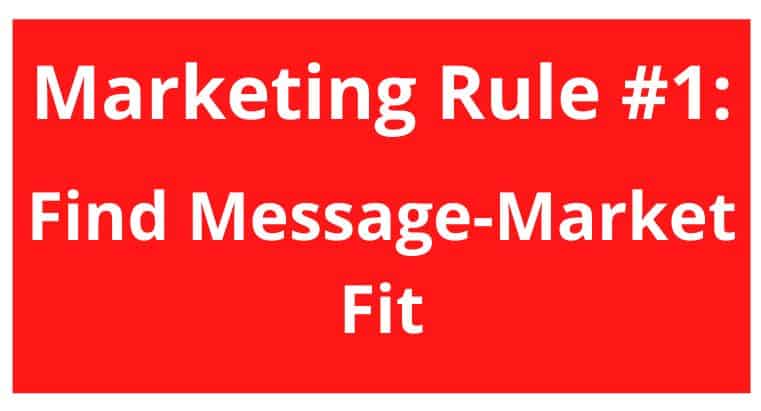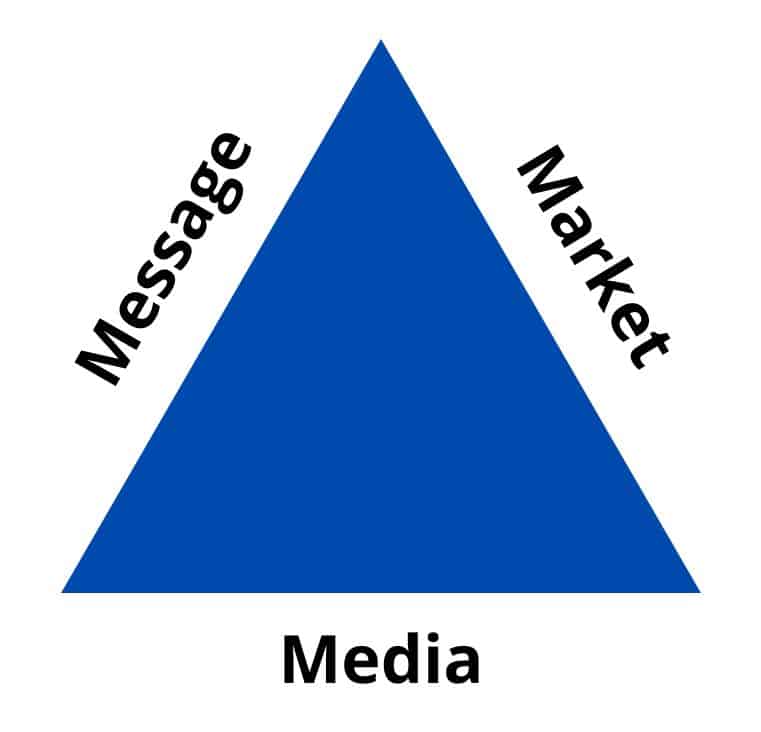Most important restaurant industry financial ratios (+examples)
If you are in the restaurant industry, or plan to be, you have found the right article. Today, we are […]
Read More »Become a successful marketing consultant: Learn more

Many think marketing is done by a master sitting atop a mountain waiting to be struck by creative genius.
While others think marketing is only about crunching “the data”.
The first rule of marketing is to find the marketing message that most resonates with your target market. This is called message-market fit and all marketing resources should be focused on this initial task.
In reality, success in marketing is found when the message is embraced by the market.
When this occurs, you have something called message-market-fit. Marketing pros call this “fit”, for short. And finding “fit” is the first rule of marketing.
What is the definition of “fit”?
The definition is very clear and has no room for discussion. Fit is defined as ‘money in the bank’.

In other words, a sale has been made.
But where most newbie marketers often struggle, is they focus too early on the process called: “media”.
That is, new marketers focus on the latest technology or a great offer from an advertising rep promoting. Often neglecting research to confirm if the customer will embrace the marketing message on a given media platform.
When you start with the media first, you are forced to make the media the priority before finding message-market-fit.
Again, focusing on the media first - before the message and the market - is starting with online advertising, a radio ad, or a TV commercial before learning where your customers are. This takes the focus away from researching how your customers are most likely to respond to your message.
And here-in-lies the problem, leading to a waste of financial resources, a lot of time spent, and, unfortunately, a lot of marketing and business headaches.
In marketing you have three main components:
Think of them like a triangle. Each side is crucial to the entire picture. Each supports one-another. When one of them is off, it is a broken triangle.

And your marketing is no different.
When all three components in the marketing triangle are accurate, you have a winning marketing campaign.
But if one is off the mark … you have a loser.
Back to the #1 marketing rule: You must start with the market and the message first.
Just as we teach:
Identify your target market, focus on your value proposition and then build your Marketing Mix.
Again, finding fit is your primary objective as a marketer.
The way to find fit is through a marketing principle called: testing.
You start simply testing your message to your target market.
If you have done a lot of research before your first market test, you might find fit on your first test. If you do, that’s great! Now test to the same group again, but go bigger.
That is, instead of testing your message to a small group of <100 and you find fit, now test the same message to 500 people in your target market. If you get similar results, but bigger in the same scale, you may have a big winner.
For many of us, finding FIT may require even up to hundreds of tests.
Technology such as Facebook and Google Ads has made this process of testing much much easier on marketers.
And this is where the first phase of marketing truly takes place.
Testing is where the marketing work is done, and lets now go deep into how this process is done.
Before branding. Before making a logo. And before choosing your website colors, finding fit is where the marketing magic is made.
The best way to learn marketing is to perform market tests and search for message-market-fit. The skills learned in this process is where a marketing professional earns his/her money.
Once you find a message-market fit,
Your primary goal as a new, or a veteran marketer, is to become great at market testing.
In fact, market testing is the most reliable form of market research.
And lucky for us marketing professionals, market testing is a very simple process.
But it's not easy. And this is where it gets complicated.
First, when you clearly think through the identification of your market, you will get a deep understanding of where the people in your target market live, how old they are, who they are, what they buy, how are they buying, what kind of questions they ask, what they want to gain as a result of what they are buying and more.
This is the hardest part of the process.
Nest, as you develop your unique selling proposition, you are adding value to your offer so you present the obvious choice. There are two main ways to do this: 1) by making your product or service more valuable with better materials, larger, more useful, etc, or 2) by providing a cost savings.
Once you have these items worked out, it’s time to develop your marketing mix. We talk a lot about the 4 P’s here. It's not complicated. You’ve already figured out who and what. Let’s now find out where to place the ad and at what price point. This is where the media decision is made.
As a rule of thumb, you can price it at or below market rate for the first market test. You can always raise prices.
Now we can talk about “media”.
Before choosing the media for how we are going to communicate our message to the market is: when someone wants to buy, how will we take an order?
Is your target market concentrated online? If yes, build a landing page on your website with an order process, use a social media tool, or use the telephone.
Let’s assume it’s your website and we want to test an online ad, as that is where most initial testing is done.
For our first test there are tons of platforms we can choose to use including Facebook ads, Google ads, Microsoft ads, Reddit.com, or a native ad source like Digg.com.
Let’s build some Google ads and communicate our message to a group that we identify.
If you have a budget of $50, run the ads and see what the response is. If you make a profitable sale, this is a green light to move forward. If there are no sales and no positive results within a reasonable time frame, you need to make a change, also called a pivot. Look at the offer again, how it is communicated and the target market.
Here's three example campaigns you can review and model as you’d like:
As always, if you need assistance, we are happy to help!